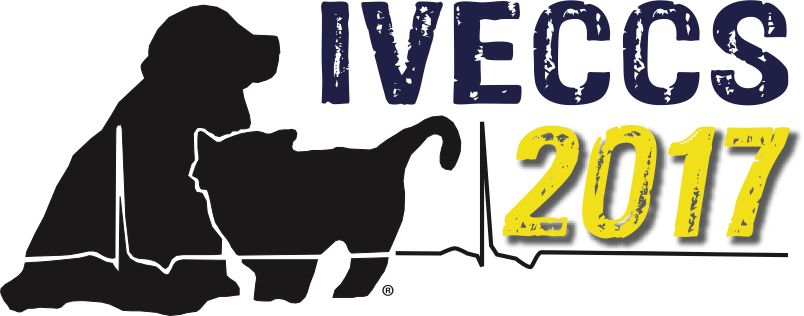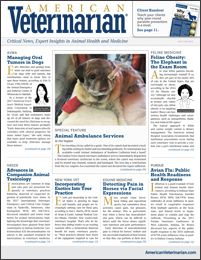IVECCS 2017: Advances in Companion Animal Toxicology
Prompt recognition and treatment of animal poisoning enable the best patient outcome. Here is the latest on decontamination and detoxification.

Intoxications are common in dogs and cats; pets are presented frequently to veterinary practices following observed or suspected ingestion of potentially toxic items. At the 2017 International Veterinary Emergency and Critical Care Symposium in Nashville, Tennessee, Amy Koenigshof, DVM, MS, DACVECC, discussed standard and newer treatments for animal intoxications, highlighting the knowledge that veterinary investigators have gleaned from their counterparts in human medicine. Gastrointestinal (GI) decontamination via emesis is the standard treatment for intoxications in veterinary medicine, said Dr. Koenigshof, assistant professor in the Department of Small Animal Clinical Sciences at Michigan State University College of Veterinary Medicine.
RELATED:
- Handling Animal Intoxication
- IVECCS 2017: Lipid Rescue in Veterinary Intoxication
Emesis
In dogs, emesis can be induced with hydrogen peroxide or apomorphine; in cats, xylazine is used. Dr. Koenigshof warned, however, that hydrogen peroxide “isn’t quite as benign as we always thought it was.” She advised against instructing owners to induce emesis at home with hydrogen peroxide be- cause it can cause gastric ulceration in healthy dogs, and giving too much can result in severe ulceration. “If we’re going to induce emesis and the client is close to us,” she said, “it may be worth having them come in to receive apomorphine or xylazine to induce emesis.”
The downside of emesis is that it does not remove all the gastric contents. In addition, Dr. Koenigshof noted that emesis must occur within 1 to 4 hours of toxin ingestion to be effective. “Ideally,” she said, “emesis should be induced within 1 hour, but at our clinic, most patients are more than 1 hour post ingestion by the time they arrive.” Contraindications to GI decontamination with emesis include ingestion of acids or alkalis, altered mentation, seizures, and significant preexisting conditions.
In human medicine, inducing emesis following the ingestion of toxins is very rare, largely because doing so may delay the administration of activated charcoal. Emesis is also contraindicated in people with a decreased level of consciousness. When emesis is induced, Dr. Koenigshof said, it is done within 30 minutes of ingestion of a toxic substance.
Activated Charcoal
Activated charcoal offers a large surface area to which toxins can bind and thus be adsorbed and excreted, Dr. Koenigshof said, and many common toxins bind to it readily. One big advantage of activated charcoal over emesis induction is that activated charcoal works not only in the stomach but also in the small intestine. “Activated charcoal is great for those patients we’re seeing 1 to 2 hours post ingestion when the toxin has moved into their small intestine,” Dr. Koenigshof said. “We can give activated charcoal to bind that material and avoid further absorption.”
It is important to keep in mind that not everything binds to activated charcoal, Dr. Koenigshof noted. “Two substances we see commonly that don’t bind to activated charcoal are xylitol and ethylene glycol,” she said.
Randomized studies in humans have shown that patients who received activated charcoal alone following toxin ingestion—versus activated charcoal plus emesis—had shorter hospital stays and fewer adverse effects (eg, aspiration pneumonia).1 Dr. Koenigshof said there is some evidence in veterinary medicine that activated charcoal alone is as effective as activated charcoal combined with emesis,2,3 noting that she very rarely induces emesis now. “I only do that for very recent ingestion of substances that are easily treatable,” she said. “Then I follow as quickly as possible with activated charcoal if the substance binds to it.” Giving charcoal quickly is very important, she advised, so that everything binds in the small intestine before more of it is absorbed.
Multiple doses of activated charcoal are often recommended for animals that ingest substances that undergo enterohepatic recirculation, which occurs when a toxic substance or its active metabolites are absorbed by the stomach and small intestine, delivered to the liver, and then excreted back to the GI tract via bile. Additional doses of activated charcoal should be administered 4 to 6 hours apart so that some charcoal is available to bind to toxin that has been re-secreted into the GI tract, she said. In addition to increasing cost for the client and adding staff time, Dr. Koenigshof noted that giving multiple doses of activated charcoal might increase the risk for vomiting and small bowel obstruction in the patient.
In humans, multiple doses of activated charcoal are recommended only for specific toxicities: carbamazepine, dapsone, phenobarbital, quinine, and theophylline.
Many dogs are indiscriminate and will eat the charcoal if it is offered, Dr. Koenigshof said. It can also be mixed with pet food or baby food. “Alternatively, we can syringe-feed it to them,” she said, “using caution and doing it slowly so they don’t aspirate.” Very few cats will eat activated charcoal, and it can be difficult to syringe-feed them, so an alternative is to give it via a nasogastric tube. Tube placement should be confirmed radiographically.
Cathartics, typically sorbitol, are sometimes administered with activated charcoal. Cathartics are thought to decrease GI transit time by drawing water into the GI tract. There are risks with any cathartic, however, Dr. Koenigshof warned. “With multiple doses, we can get hypernatremia and an increased risk for excessive vomiting.” She also noted that abdominal discomfort has been reported in people given cathartics, and there is debate about whether cathartics inhibit binding of the substance to the charcoal. “We do know that cathartics alone are ineffective,” she said. “Therefore, if cathartics are used, they should be given only with the first dose of activated charcoal.”
Lipid Rescue
One of the newest therapies for toxin ingestion is intravenous lipid emulsion, or lipid rescue, which is simply the intravenous administration of lipids. “These are the same lipids you would mix with amino acids and glucose for parenteral nutrition,” Dr. Koenigshof said. Intravenous lipids are thought to work as a “lipid sink” for lipophilic drug toxicosis, and they improve myocardial performance in 2 ways. First, they reverse cardiac dysfunction caused by the toxicant, and they offer direct benefits on the myocardium by providing free fatty acids, increasing intracellular calcium, and causing vasoconstriction.
The first use of lipid rescue in human medicine was for local anesthetic toxicity. It is used clinically in veterinary medicine for avermectin and milbemycin overdoses in sensitive breeds. Case reports have shown that it potentially decreases clinical signs and shortens the course of disease in these patients.4-6 Dosing, adopted from human medicine, is a small bolus followed by a constant-rate infusion over 30 to 60 minutes.
Overall, lipid rescue is quite safe, Dr. Koenigshof said, but there are some risks. “The lipid can become contaminated with bacteria,” she said, “so it must be used within 24 hours because it’s an excellent medium for growing bacteria.” Other risks include anaphylactoid reactions and fat overload syndrome, which can cause fat emboli, hyperlipidemia, splenic/liver enlargement, icterus/hemolysis, thrombocytopenia, and increased clotting times.
Dr. Koenigshof recommends going to standard therapy first except in cases of local anesthetic toxicity, where lipid emulsion is now the standard. “If standard therapy is not working,” she advised, “consider lipid emulsion for drugs that are lipophilic.”
References:
- Albertson TE, Deriet RW, Foulke GE, Minguillon MC, Tharratt SR. Superiority of activated charcoal alone compared with ipecac and activated charcoal in the treatment of acute toxic ingestions. Ann Emerg Med. 1989;18(1):56-59. doi: 10.1016/S0196-0644(89)80314-2.
- Pachtinger GE, Otto CM, Syring RS. Incidence of prolonged prothrombin time in dogs following gastrointestinal decontamination for acute anticoagulant rodenticide ingestion. J Vet Emerg Crit Care. 2008;18(3):285-291. doi: 10.1111/j.1476-4431.2008.00313.x.
- Schildt J, Jutkowitz LA, Beal MW, Poppenga R, Koenigshof AM, Hauptman JG. Effect of activated charcoal alone versus emesis and activated charcoal on carprofen absorption following experimental overdose in dogs [abstract]. J Vet Emerg Crit Care. 2009;19:A6.
- Jourdan G, Boyer G, Raymond-Letron I, et al. Intravenous lipid emulsion therapy in 20 cats accidentally overdosed with ivermectin. J Vet Emerg Crit Care. 2015;25(5):667-671. doi: 10.1111/vec.12371.
- Herring JM, McMichael MM, Corsi R, Wurlod V. Intravenous lipid emulsion therapy in three cases of canine naproxen overdose. J Vet Emerg Crit Care. 2015;25(5):672-678. doi: 10.1111/vec.12307.
- Peacock RE, Hosgood G, Swindells KL, Smart L. A randomized, controlled clinical trial of intravenous lipid emulsion as an adjunctive treatment for permethrin toxicosis in cats. J Vet Emerg Crit Care. 2015;25(5):597-605. doi: 10.1111/vec.12322.
